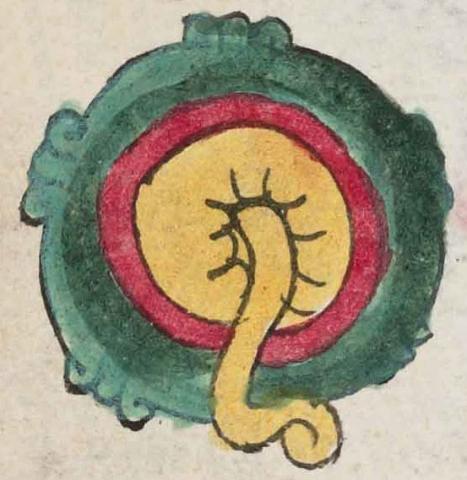xictli (Mdz20v)
This simplex glyph for xictli (navel, bellybutton, umbilical cord) also doubles as the place name for Xicco. It features an umbilical cord and a navel.
Stephanie Wood
These anatomical features are drawn in a way that is reminiscent of the features of a cave, creating a parallelism between body and earthly interiors. The red and yellow recall the slit at the bottom of the tepetl from which water can ooze, as we see in the place name glyph Ixicayan. It is also reminiscent of the top of the arm, at the acolli, when the bone protrudes and from which liquid can escape (see Acolhuacan, below, right). See our entry for Xicco for further discussion.
Stephanie Wood
c. 1541, but by 1553 at the latest

Codex Mendoza, folio 20 verso, https://digital.bodleian.ox.ac.uk/objects/2fea788e-2aa2-4f08-b6d9-648c00..., image 51 of 188.
Original manuscript is held by the Bodleian Libraries, University of Oxford, MS. Arch. Selden. A. 1; used here with the UK Creative Commons, “Attribution-NonCommercial-ShareAlike 3.0 License” (CC-BY-NC-SA 3.0)




